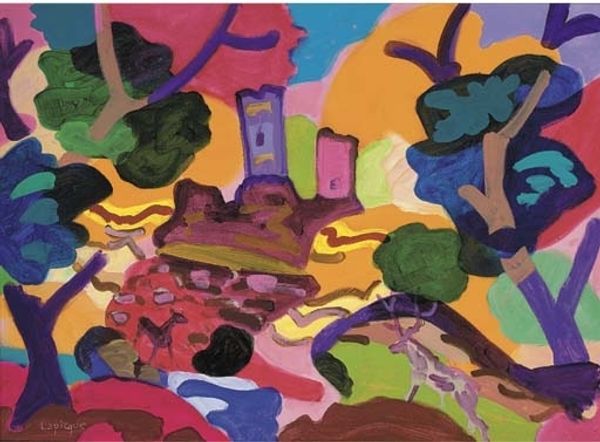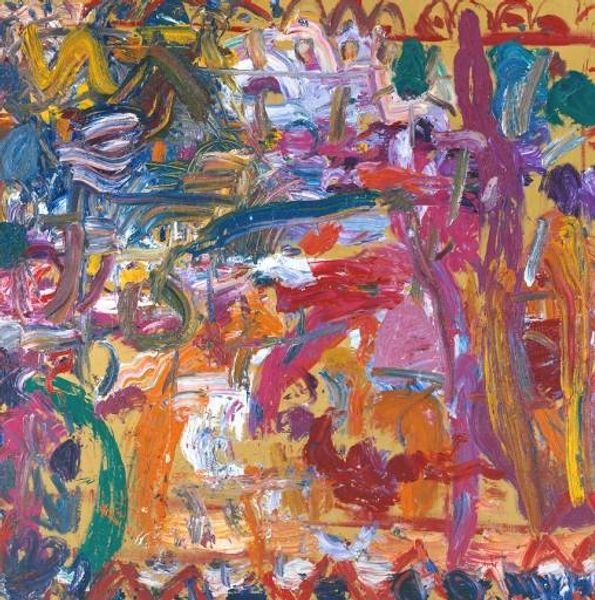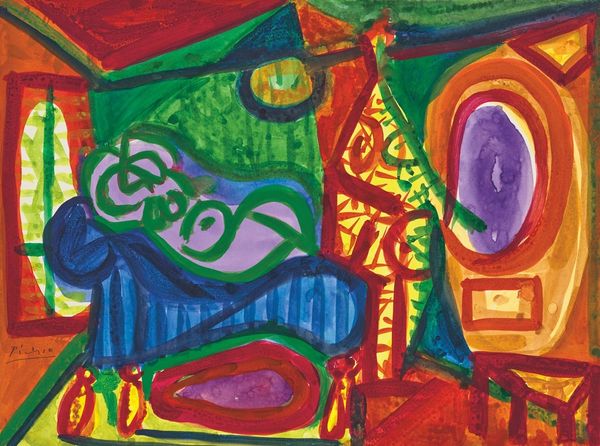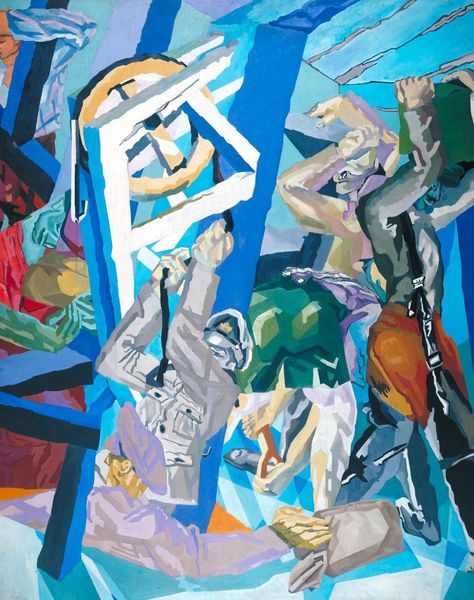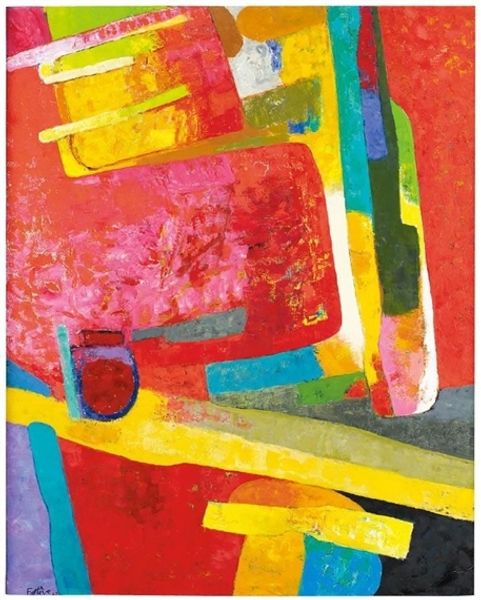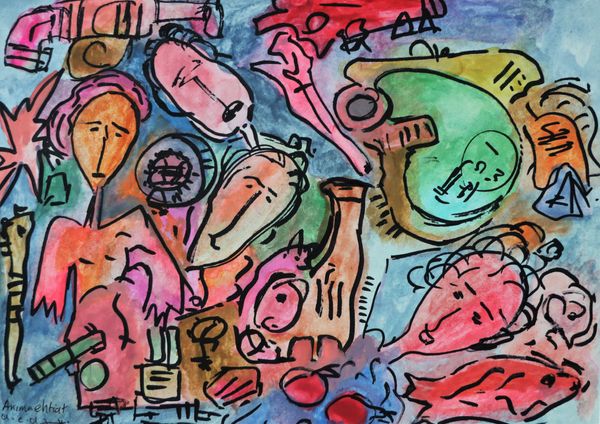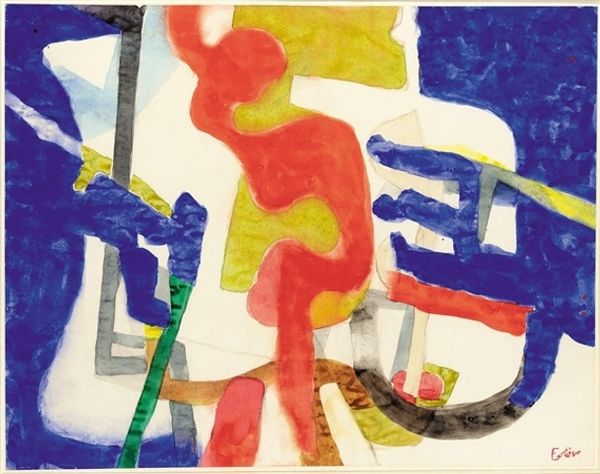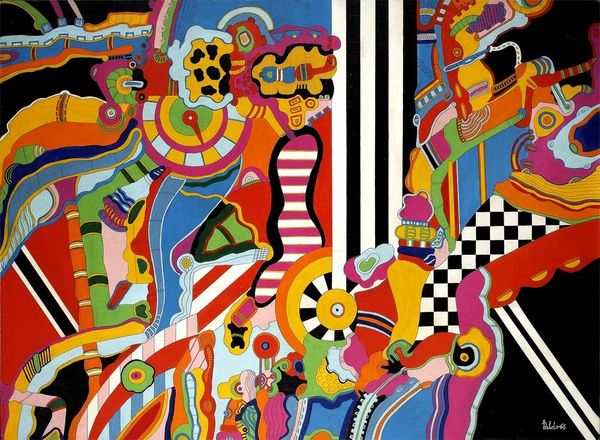
Copyright: Charles Lapicque,Fair Use
Editor: Here we have Charles Lapicque’s "Le bal," created in 1976 using acrylic paint. It has such a dynamic and dreamlike feel. What do you see in this piece? Curator: It’s fascinating, isn’t it? Immediately, I’m drawn to the representation of figures within a cityscape, painted in vibrant, almost Fauvist colors. Consider the historical context. Post-World War II, and even by 1976, figuration in art was often charged with social and political meaning. Editor: So, you're suggesting that a seemingly innocent "ball" could have deeper layers? Curator: Exactly. Ask yourself: Who gets to dance? Who is included in this ‘bal,’ and who is excluded? The almost mask-like quality of the faces raises questions about identity and performance. Is it a celebration or a commentary on social roles? Look at how he flattened perspective; how does this challenge our understanding of social hierarchies depicted? Editor: It definitely shifts how I perceive it now. Initially, it just felt like a colorful, abstract scene. Curator: Precisely. And think about the material choice of acrylic. It offered artists a faster-drying, more versatile medium that allowed for layering and bold experimentation. So, what do you make of this renewed vision? Editor: I see how Lapicque is using the formal elements and the cultural context to question traditional representations of social gatherings. Curator: Right, and that is exactly how the artist could create new narratives on societal issues and individual position! Editor: I learned so much about how historical and cultural factors influence our understanding. Curator: Exactly. We’ve peeled back the layers of art. "Le bal" shows us art as both aesthetic experience and a field where ideology and identity come to meet.
Comments
No comments
Be the first to comment and join the conversation on the ultimate creative platform.


